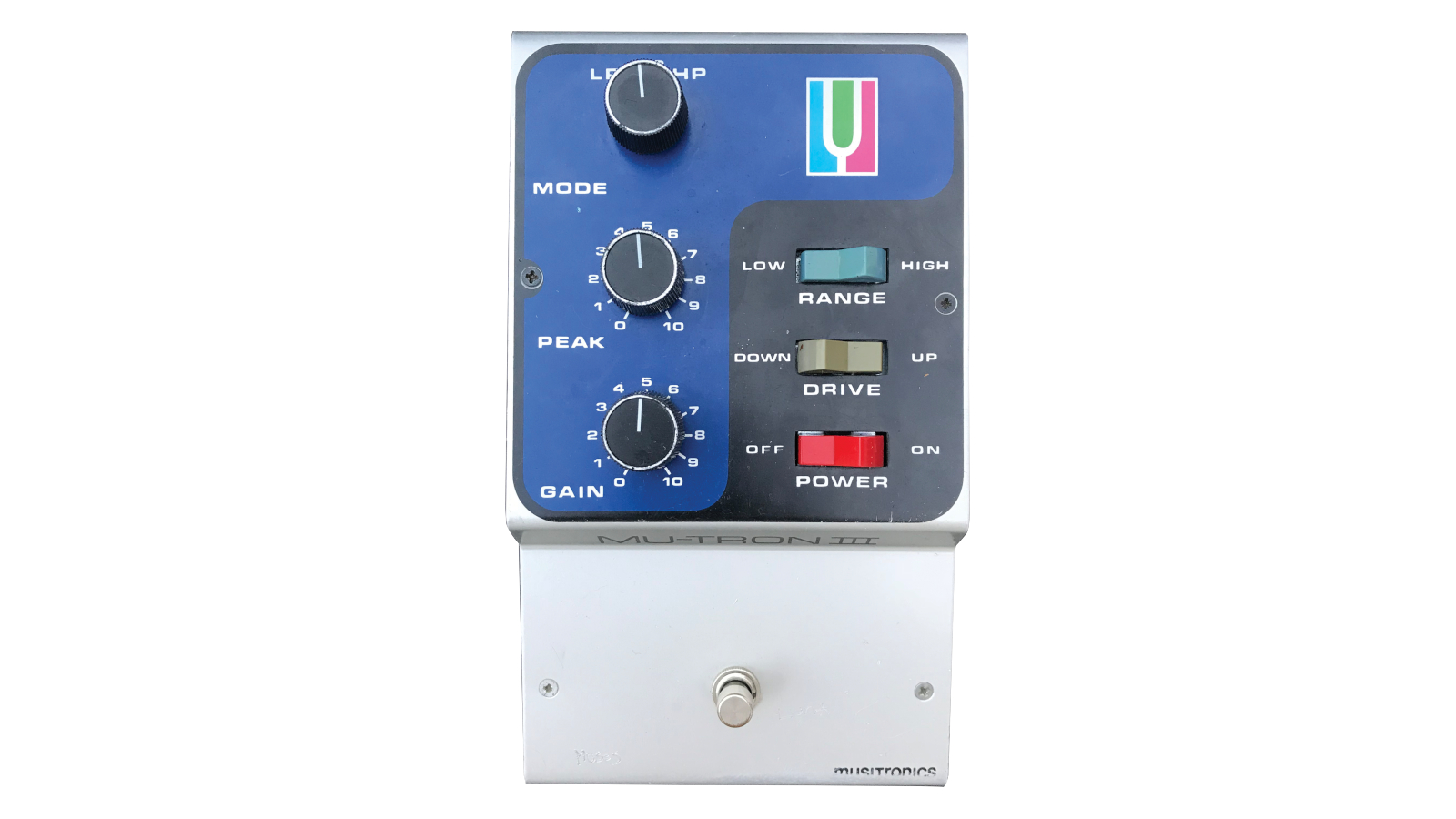Favored by Frank Zappa and Jerry Garcia, the Musitronics Mu-Tron III Combined Wild Sonics and Creative Usability
Unveiled in 1972, this pioneering envelope filter was a near-instant hit

The 1960s gave us the fuzz box, the treble booster, the wah-wah and a handful of other cool pedals, but the ’70s delivered the real boom in stompbox-sized effects, with creative designs busting out in all directions.
None of the decade’s early developments offered the same combination of wild sonic melding and creative usability as the envelope filter
Arguably, none of the decade’s early developments offered the same combination of wild sonic melding and creative usability as the envelope filter, best captured in the seminal Mu-Tron III, which Musitronics unveiled in 1972.
Pioneering effects inventor Mike Beigel founded Beigel Sound Lab in 1971 to develop musical electronics, and notably was in early development of a groundbreaking synthesizer for Guild, which was shelved when the parent company went bankrupt.
Beigel then invented the Mu-Tron III in 1972, and founded Musitronics to manufacture and market the product, which was a near-instant hit.
The sound of the Mu-Tron III (and other similar envelope filters) is perhaps best described as a watery, wah-wah like effect that’s controlled by the strength of your playing.
In the envelope filter, a voltage-controlled filter circuit reacts to the intensity of the incoming signal
Given these characteristics, envelope filters are often mislabeled as “auto-wahs,” although these two effects are differentiated by the ways in which their sounds are enabled.
A peaking filter produces a “wah” sound common to both, but this effect is triggered differently in each of them. In the envelope filter, a voltage-controlled filter circuit reacts to the intensity of the incoming signal – which is to say, the strength of the guitarist’s picking – to determine the depth of the wah sound.
All the latest guitar news, interviews, lessons, reviews, deals and more, direct to your inbox!
In the auto-wah, a modulation circuit, not unlike that in a tremolo or phaser pedal, determines the preset rate at which the effect is triggered.
Cast your mind’s ear back to classic funk tunes, and it’s not hard to conjure up the distinctive sound of an envelope filter. Chances are, if that sound was recorded in the ’70s, it was produced with a Mu-Tron III.
Frank Zappa displayed a deep appreciation for the effect, as did Grateful Dead main man Jerry Garcia
Ironically, some of the most notable examples feature instruments other than the guitar. Stevie Wonder’s hit “Higher Ground,” from his 1973 album, Innervisions, was recorded by tracking his Hohner Clavinet through a Mu-Tron III.
Just about anything bassist Bootsy Collins did had Mu-Tron III all over it, and his Parliament-Funkadelic keyboard cohort, Bernie Worrell, played plenty of his own riffs through the effect as well.
The granddaddy of envelope filters crossed over into many genres as well. Frank Zappa displayed a deep appreciation for the effect, as did Grateful Dead main man Jerry Garcia.
Steve Vai has often carried one in his pedal rack, and a young Larry Coryell made waves with the effect when he was a rising jazz star in the ’70s. Musitronics even hired him to record a Mu-Tron III demo album, which was released in 1975.
The seminal envelope filter wasn’t the only classic to come out of the Musitronics stable. In 1974, Beigel developed the Mu-Tron Bi-Phase, and in 1977 he invented the Mu-Tron Flanger, both of which now fetch major bucks on the collectors’ market.
Beigel reworked the Mu-Tron III formula for Mike Matthews in 1996 as the Electro-Harmonix Q-Tron
The Mu-Tron lineup was manufactured by Musitronics until synthesizer maker A.R.P. purchased the brand in 1978, a deal inspired partly by Musitronics’ losses from the failed effort to develop the Gizmotron, a device invented by Lol Crème and Kevin Godley of the English band 10cc.
Beigel himself continued to invent and develop effects under other guises afterward, notably re-working the Mu-Tron III formula for Mike Matthews in 1996 as the Electro-Harmonix Q-Tron, an envelope filter that has flown the funk flag high and proud ever since.
Beigel founded Mu-Fx to produce more compact renditions of his ’70s classics in 2013. His products are once again being manufactured and sold under the Mu-Tron brand since he reacquired the name in 2018.
Dave Hunter is a writer and consulting editor for Guitar Player magazine. His prolific output as author includes Fender 75 Years, The Guitar Amp Handbook, The British Amp Invasion, Ultimate Star Guitars, Guitar Effects Pedals, The Guitar Pickup Handbook, The Fender Telecaster and several other titles. Hunter is a former editor of The Guitar Magazine (UK), and a contributor to Vintage Guitar, Premier Guitar, The Connoisseur and other publications. A contributing essayist to the United States Library of Congress National Recording Preservation Board’s Permanent Archive, he lives in Kittery, ME, with his wife and their two children and fronts the bands A Different Engine and The Stereo Field.


